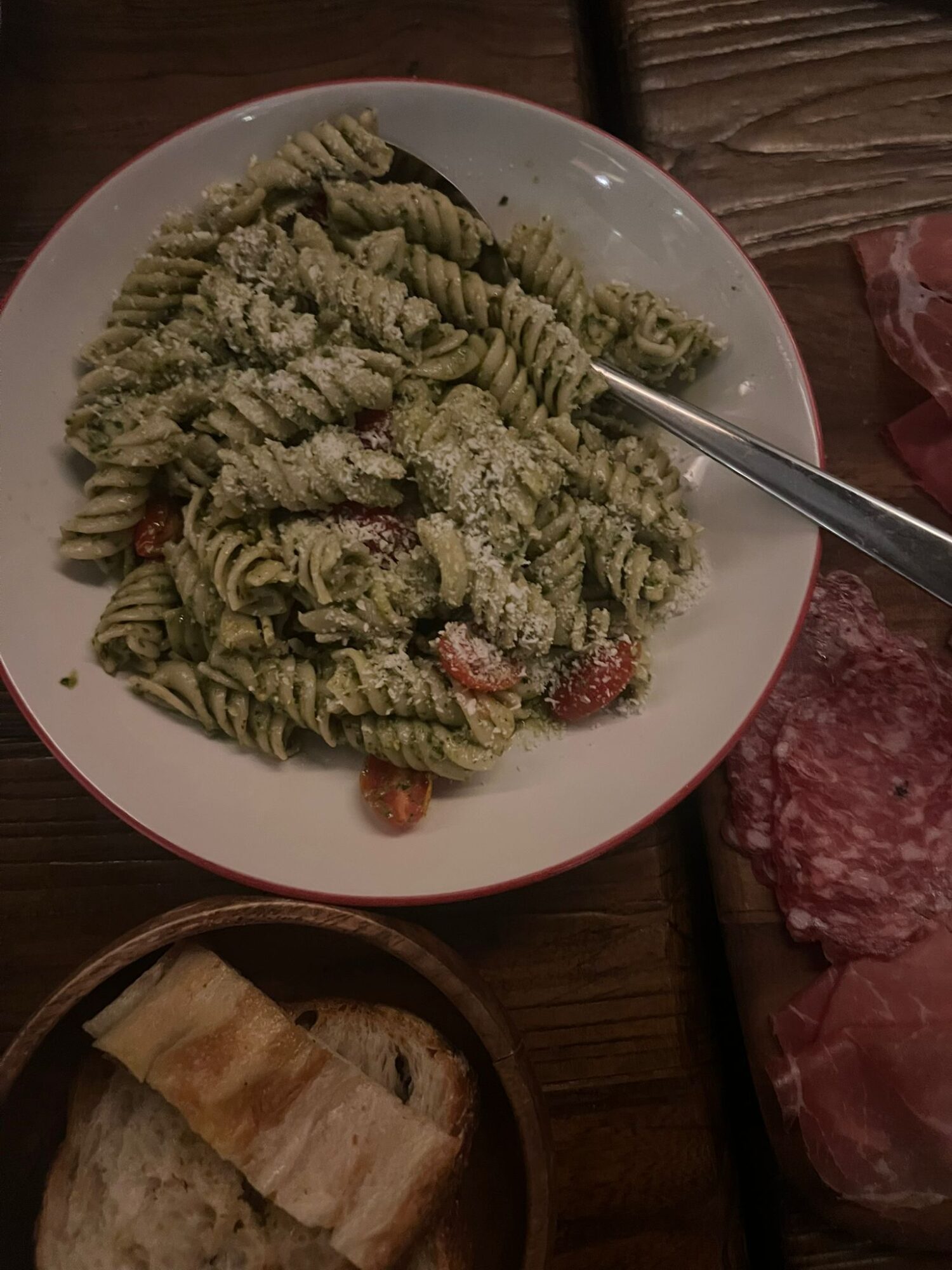The winning recipe that has led Di Palo to reach the 100-year milestone lies in the family. Each member has contributed for five generations to carry on and expand the tradition of the food market in the heart of Little Italy. The latest product is the C. Di Palo wine bar at 151 Mott Street, where Accademia Italiana della Cucina of New York has decided to organize an “apericena,” a moment of conviviality that has recently become popular in the United States as well.

“The concept of apericena was inspired by the aperitivo,” Roberta Marini de Plano, Delegate of the Accademia Italiana della Cucina of New York. “It comes from the Latin aperire which means to open the appetite. People started to have aperitivo after the invention of Vermouth in Turin in the 1700s: they needed some snacks with their drinks to tide them over till dinner time without starving. As time went by, in the 1800s, Campari created their liquor, mixing botanicals, alcohol, and herbs and this helped spread the aperitivo in Milan. The same happened when Negroni was invented in 1919. It became part of the social culture of Italy. Track forward to the 1990s, to remain true to their values—conviviality, being together, and sharing the meal—young students in these university towns didn’t want to cook at home nor go to their grandma’s or dinner. They wanted something more casual, less expensive, faster: hence the cafes and bars started serving tables with prepared hot and cold foods.”
In true Di Palo’s style, the owner Lou has translated this concept into a wine bar, freshly opened, that features wines sought after throughout Italy and accompanied by savory and sweet regional products. “Italy has more diversity of wine than any other country in the world,” Di Palo commented. “You could drink a different wine at lunch and dinner for an entire year probably not repeating.”

For the occasion, the owner offered three niche red wines, such as Kent’Annos Mandrolisai Rosso DOC 2023 from Sardinia (South), Montefalco Rosso DOC from Umbria (center), and Teroldego Rotaliano Trentino DOP Lechthaler from Trentino Alto-Adige (North). Each glass was paired with bruschetta with ricotta and honey and caprese with Fiordilatte mozzarella and balsamic vinegar; salumi and cheese board; pasta with pesto and confit tomatoes; and ricotta with sour cherries. Di Palo’s passionate explanation was central to the event as he walked the diners through curious details about the processing of the products, the search for suppliers, and the relationships created with Italian-producing families.
It was not just “a tour of Italy,” as Marini De Plano introduced the evening, but an experience that spanned the history of this Italian-American family that arrived in New York in the early 1900s. “In 1903, after the eruption of Mount Etna, my great-grandparents had nothing and came to the U.S. The other part of the family came from Basilicata, and when they arrived here they had a hard time integrating. They managed to open the first cheesemaking dairy in 1910 and it was so successful that it was shown in the movie The Godfather. We are now one of the oldest American families who originally made fresh cheese. Each generation has included another part of the business–cheese and milk, olive oil and canned tomatoes, and more.”
“People like Lou and activities like the ones promoted by Accademia Italiana della Cucina make Italians and Italian-Americans proud of their origins. At the table, so many things always happen. It is important for us to share these moments together, and enjoy a glass of wine with small portions of pasta and focaccia. This is the essence of the apericena,” ITA Head of Food and Wine Division Raimondo Lucariello.
Concluding the evening, Di Palo received the “Giovanni Nuvoletti” award for “the incredible work he has done in restoring value to our traditions,” Marini De Plano explained while giving it to him.












